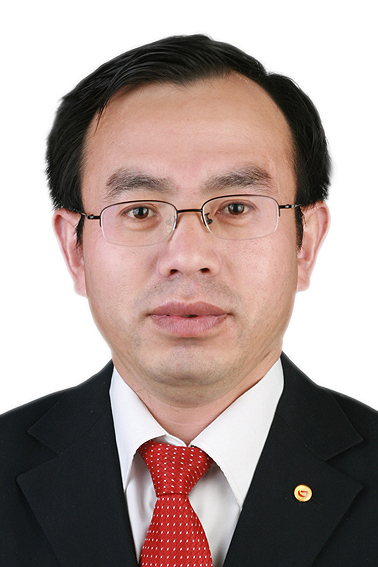
| 张丙昌 |
|
|
张丙昌,男,汉族,1972年9月生,河北威县人。中共党员,生态学理学博士,山西师范大学四级引进人才,地理科学学院教授。
研究方向:
1)蓝藻物种多样性研究,结合干旱半干旱区,深入挖掘蓝藻的物种资源,开展其分类学、系统演化和资源利用等研究工作;
2)土壤环境微生物研究,包括微生物多样性、群落结构与环境驱动因素,揭示自然与人为干扰条件下干旱、半干旱区土壤微生物的变化规律及其在土壤养分循环过程中所起的关键作用;
3)生物结皮与恢复生态学方向,以黄土高原和典型温带荒漠为研究区,研究生物结皮、以及与种子植物的物种互作机制、演替机理与恢复过程,以期筛选生物结皮关键物种与最适搭配方式对我国干旱区、黄土高原脆弱生态系统进行改良与保护。
讲授课程:植物地理学,城市生态学,自然地理研究进展,专业论文写作
受教育经历:
1. 1993/09-1995/07,衡水师范专科学校,生物系
2. 1998/09-2001/06,河北师范大学,生命科学学院,学士
3. 2003/09 -2006/06,河北师范大学,生命科学学院,理学硕士
4. 2006/07-2009/06, 中国科学院新疆生态与地理研究所,生态学,理学博士
工作经历:
1. 1995年8月-2003年8月,河北省威县七级中学任教。
2. 2009年7月-2010年10月,中国科学院新疆生态与地理研究所,生物资源与生物地理研究室,助理二级研究员。
3. 2010年11月-2013年6月,中国科学院新疆生态与地理研究所,生物资源与生物地理研究室,助理一级研究员。
4. 2012年12月-2013年3月,在美国约翰卡罗尔大学藻类学家Jeff Johansen实验室做访问学者。
5. 2013年7月-2017年9月,中国科学院新疆生态与地理研究所,生物资源与生物地理研究室,副研究员。
6. 2017年10月-2018年12月,山西师范大学地理科学学院,副研究员(副教授)
7. 2018年12月-2019年11月,山西师范大学地理科学学院,副教授。
8. 2019年12月-至今,山西师范大学地理科学学院,教授。
9. 2024年11月-2025年5月,澳大利亚墨尔本大学农业食品与生态系统科学学院访学研究
主持与参与项目:
1. 国家自然科学基金面上项目,晋西北丘陵风沙区生物结皮生态功能演替及微生物学机制(42271067)(经费50万元),2023-2026,主持,在研。
2. 国家自然科学基金新疆联合重点项目子课题,西北主要荒漠区生物土壤结皮多样性特征及养分功能性状格局(U2003214)(经费267万元),子课题题目:西北荒漠区生物结皮中微生物种类组成特征及功能微生物多样性(53.4万元),2021-2024,主持,在研。
3. 国家自然科学基金,“人工培养生物结皮蓝藻对极端干旱胁迫的生理适应性研究”(项目编号:U1503103),62.6万元,2016-2018,主持,已结题。
4. 国家自然科学基金,“古尔班通古特沙漠藻类的时空分布特征及其影响因子”(项目编号:41071041),50万元,2011-2013,主持,已结题。
5. 山西师范大学人才引进项目,50万元,在研。
6. 中国科学院“西部之光”人才培养计划,“荒漠生境中孢子植物和维管植物种间关系研究” (项目编号:RCPY200904),23.3万元,2010-2012,主持,已结题。
7. 国家重点研发计划项目:天山退化野果林生态系统生态保育与健康调控关键技术,执行期:2016-2020;经费1300万元,参与,已结题。
8. 国家重点基础研究发展计划项目(973)“干旱区碳同化过程与地气界面碳交换”(505万元, 2009.1-2013.12),参与,已结题。
9. 科技部国际科技合作项目“中亚生态样带综合科学考察与研究”(2010DFA92720)(300万元,2011.1-2013.12),参与,已结题。
10. 中科院知识创新工程重要方向项目“基于生物结皮的荒漠生态系统修复机理与技术研究”(KZCX2-YW-336),125万元,2009.1-2011.12,参与,已结题。
11. 中国科学院知识创新工程重要方向项目“中国典型温带荒漠生物多样性研究”(KZCX3-SW-343),215万元, 2005.1-2008.12,参与,已结题。
12. 国家自然科学基金重点项目“荒漠地表生物土壤结皮形成机制及其在沙漠化防治中的应用”(90202019),2003-2005,参与,已结题。
文章发表:
1) Zhao Kang, Zhang Lei, Wang Fei, Li Kaikai, Zhang Yali, Zhang Bingchang. Dynamics in eukaryotic algal communities regulate bacterial and fungal communities as biocrusts develop in a temperate desert in Central Asia. Function Ecology, 2024,38, 531-545.
2) Qian Liu, Shuping Zhou, Bingchang Zhang*, Kang Zhao1 *, Fei Wang, Kaikai Li and Yali Zhang. The development of biological soil crust regulates the fungal distribution and the stability of fungal distribution and the stability of fungal networks. Frontiers in Microbiology, 2024,Doi, 10.3389/fmicb.2024.1347704.
3) Lin Xu,Bingjian Zhu, Chaonan Li, Zhichao Zhou, Minjie Yao, Xiaobing Zhou, Junming Wang, Bingchang Zhang*, Xiangzhen Li* . Increasing relative abundance of non-cyanobacterial photosynthetic organisms drives ecosystem multifunctionality during the succession of biological soil crusts. Geoderma (SCI, Q1, )., 2021, 395, 115052.
4) Lin Xu#, Bingchang Zhang#, Entao Wang, Bingjian Zhu, Minjie Yao, Chaonan Li, Xiangzhen Li*. Soil total organic carbon/total nitrogen ratio as a key driver deterministically shapes diazotrophic community assemblages during the succession of biological soil crusts. Soil Ecology Letter, 2021, doi.org/10.1007/s42832-020-0075-x.
5) Kang Zhao, Bingchang Zhang* , Jianan Li, Bin Li, Zhifang Wu. The autotrophic community across developmental stages of biocrusts in the Gurbantunggut Desert. Geoderma, (SCI, Q1), 2021, 388,114927.
6) ZHANG Bingchang, ZHANG Yongqing, ZHOU Xiaobing, LI Xiangzhen*, ZHANG Yuanming*. Snowpack shifts cyanobacterial community in biological soil crusts. J Arid Land (Q3)(2021) 13(3): 239-256.
7) Lin Xu, Bingjian Zhu, Chaonan Li, Minjie Yao, Bingchang Zhang*, Xiangzhen Li*. Development of biological soil crust prompts convergent succession of prokaryotic communities. Catena (SCI, Q1,IF:4.25 ),2020, 187, 104360.
8) Yangui Su, Jie Liu, Bingchang Zhang, Hongmei Zhao, Gang Hang*, Habitat-specific environmental factors regulate spatial variability of soil bacterial communities in biocrusts across northern China’s drylands. Science of the Total Environment (SCI, Q1,IF:5.92 ), 2020, 719,137439.
9) Xiaobing Zhou, Yunge Zhao, Jayne, Belnap, Bingchang Zhang, Chongfeng Bu, Yuanming Zhang*. Practices of biological soil crusts rehabilitation in China: experiences and challenges. Restoration Ecology(Q2),2020,DOI: 10.1111/REC13148.
10) Bingchang Zhang, Yongqing Zhang, Xiangzhen Li, Yuanming Zhang. Successional changes of fungal communities along the biocrust development stages. Biology and Fertility of Soils(SCI,IF:3.808), 2018,54(2):285-294.
11) Bingchang Zhang, Renhui Li, Peng Xiao, Yangui Su and Yuanming Zhang. Cyanobacterial composition and spatial distribution based on pyrosequencing data in the Gurbantunggut Desert. Journal of Basic Microorganism (SCI,IF:1.58). 2016, 56, 308-320.
12) Bingchang Zhang, Weidong Kong, Nan Wu, Yuanming Zhang. Bacterial diversity and community along the succession of biological soil crusts in the Gurbantunggut Desert, Northern China. Journal of Basic Microorganism (SCI,IF:1.58). 2016, 56, 670-679.
13) Bingchang Zhang, Xiaobing Zhou, Yuanming Zhang. Responses of microbial activities and soil physical-chemical properties to the successional process of biological soil crusts in the Gurbantunggut Desert, Xinjiang (SCI). Journal of Arid Land (SCI,IF:1.44). 2015, 7, 101-109.
14) Zhang Bingchang, Zhang Yuanming *, Su Yangui, Wang Jingzhu, Zhang Jing. Responses of microalgal-microbial biomass and enzyme activities of biological soil crusts to moisture and inoculated Microcoleus vaginatus gradients (SCI,IF:0.93). Arid Land Research and Management, 2013, 27(3): 216-230.
15) Zhang Bingchang, Zhang Yuanming*, Downing Alison, Niu Yulu. Distribution and composition of cyanobacteria and microalgae associated with biological soil crusts in the Gurbantunggut Desert, China (SCI, IF:0.93). Arid Land Research and Management, 2011,25 (3): 275-293, 2011.
16) Zhang Bingchang, Zhang Yuanming*, Zhao Jiancheng, Wu Nan, Chen Rongyi, Zhang Jing. Microalgal species variation at different successional stages in biological soil crusts after disturbance of the Gurbantunggut Desert, Northwestern China (SCI,Ⅰ区, IF:2.505) . Biology and Fertility of Soils, 2009,45:539-547, 2009.
17) H. Shao, R.S. Zeng, R.L. Wang, B.C. Zhang, C. Zhang. Selective phytotoxicity of xanthinin and xanthatin from invasive weed Xanthium italicum Morretti on test plants. Allelopathy Journal, 2015,35(1): 77-86.
18) Yuanming Zhang, Nan Wu, Bingchang Zhang, Jing Zhang. Species composition, distribution patterns and ecological functions of biological soil crusts in the Gurbantunggut Desert (SCI). Journal of Arid Land, 2(3): 180-189, 2010.
19) Yunpu Zheng, Ming Xu, Jiancheng Zhao, Bingchang Zhang, Shuqing Bei, Lihua Hao. Morphological Adaptation and Reproductive Strategy of the Desert Moss Syntrichia caninervis to the Arid Environment in the Gurbantunggut Desert, Northwestern China (SCI). Arid Land Research and Management, 25(2): 116-127, 2011.
20) 张庆,尹本丰*,李继文, 陆永兴,荣晓莹,周晓兵,张丙昌*,张元明. 荒漠藓类植物死亡对表层土壤酶活性的影响. 植物生态学报, 2022,46(3):350-361.
21) 刘燕晋,李凯凯,张雅丽,赵康,张丙昌*. 古尔班通古特沙漠生物结皮微鞘藻分类学研究. 水生生物学报, 2022, 46, https://kns.cnki.net/kcms/detail/ 42.1230.Q.20220906. 1101.023.html .
22) 焦冰洁, 徐琳, 李香真, 张丙昌*. 黄土高原水蚀风蚀交错区固氮微生物群落多样性在生物结皮不同发育阶段的演变规律. 生态学报,2023,43(23),9662-9673.
23) 李凯凯,张丙昌*,赵康,张雅丽,刘燕晋.毛乌素沙地固碳功能菌群落随生物结皮发育阶段的演变特征, 生态学报,2024, 44(03),1177-1190.
24) 张雅丽 张丙昌*, 赵康, 李凯凯, 刘燕晋. 毛乌素沙地不同类型生物结皮细菌群落差异及其驱动因子. 生物多样性,2023,31(8),83-93.
25) 陈静,张丙昌,刘燕晋,武杰,赵康,明姣. 荒漠生物结皮细鞘丝藻类(Leptolyngbya-like)蓝藻多样性研究. 生物多样性,2024, 32 (9): 24186.
26) 武杰,张丙昌,陈静,武志芳,赵康. 黄土高原水蚀风蚀交错区不同生物结皮类型对土壤有机碳及其转化的影响. 水土保持学报,2024,4,38-44
27) 张丙昌*,武志芳,李 彬. 李彬. 黄土高原生物土壤结皮研究进展与展望[J]. 土壤学报,2021,58(5):1123–1131.
28) 李彬,武志芳, 陶冶,周晓兵,张丙昌*. 古尔班通古特沙漠不同类型生物结皮对草本植物多样性影响. 干旱区研究,2021, 38(2):438-449.
29) 张丙昌, 苏淼, 龚健. 生物结皮中人工培养藻株与野生藻株的形态学差异. 干旱区研究. 2015, 32(6): 1213-1219.
30) 龚健, 张丙昌*, 索菲娅. 生物结皮中优势蓝藻胞外多糖对几种荒漠草本植物种子萌发的影响. 中国沙漠. 2015, 35(3):639-944.
31) 张丙昌,王敬竹, 张元明, 邵华. 水分对具鞘微鞘藻构建人工藻结皮的作用. 应用生态学报, 2013, 24(2):535-540.
32) 王敬竹, 张丙昌*, 张元明, 薛英. 蛇麻黄和沙蒿两种典型灌丛对藻类分布的影响. 干旱区研究, 2013, 30(2):1-7.
33) 玛依努尔·伊克木, 张丙昌*, 买买提明·苏来曼. 古尔班通古特沙漠生物结皮中微生物量与土壤酶的季节变化. 中国沙漠, 2013, 33(4): 1091-1097.
34) 张丙昌, 张元明, 王敬竹. 古尔班通古特沙漠南缘典型沙垄藻类的时空分布. 中国沙漠, 31(4):2011, 919-926.
35) 张丙昌, 张元明, 赵建成等. 古尔班通古特沙漠生物土壤结皮不同发育阶段中藻类的变化. 生态学报, 2009, 29(1): 9-17.
36) 郑云普, 张丙昌, 赵建成, 徐明. 具鞘微鞘藻在荒漠藻结皮形成过程中的作用. 生态学报, 2010, 30(6): 1655-1664.
37) 张丙昌, 赵建成, 张元明等. 新疆古尔班通古特沙漠南部沙垄不同部位藻类的垂直分布特征, 植物生态学报, 2008, 32(2):456-464.
38) Zhao Jiancheng, Zhang Bingchang, Zhang Yuanming. Chlorophytes of biological soil crusts in Gurbantunggut Desert, Xinjiang Autonomous Region, China. Front. Biol. China, 2008, 3(1): 40–44.
39) 张丙昌, 赵建成, 张元明等, 荒漠生物土壤结皮中土生绿球藻的实验室培养, 干旱区研究, 2007, 24(5): 641-646.
40) 张丙昌, 张元明, 赵建成. 古尔班通古特沙漠生物土壤结皮藻类的组成和生态分布研究, 西北植物学报, 2005, 25(10): 2048-2055.
41) 张丙昌, 张元明, 赵建成等. 准噶尔盆地古尔班通古特沙漠生物土壤结皮蓝藻研究, 地理与地理信息科学, 2005, 21(5): 107-109.
发明专利授权情况:
1) 张丙昌,王敬竹,张元明. 一种荒漠环境中人工藻结皮的构建模式, 2014.5, 中国, ZL 2012 1 0084963.5
2) 张丙昌, 王敬竹, 张元明. 一种利用混合藻类构建人工藻结皮的方法, 2013. 9, 中国, ZL 2012 1 0084964. X
3) 张元明, 张丙昌, 王敬竹. 一种齿肋赤藓原丝体的培养与保存方法, 2013.3, 中国, ZL 2011 1 0084559.3.
4 ) 张元明, 王敬竹, 张丙昌. 一种沙漠生物结皮土壤磨片的取样方法, 2013.1, 中国, ZL 2011 1 0165083.6.
5) 王敬竹, 张丙昌, 张元明. 具鞘微鞘藻在室内生物结皮培养的管理模式及利用, 2012.12, 中国, ZL 201110165071.3.
6) 张丙昌, 王敬竹, 张元明. 一种通过无性繁殖建立齿肋赤藓单株克隆体系的方法,2012.12, 中国,ZL 2011 1 0116117.2.
7) 张丙昌, 王敬竹, 张元明. 一种具鞘微鞘藻的纯化分离方法, 2012.7,中国,ZL 2011 1 0116118.7.
邮箱:zhangbch@sxnu.edu.cn,bingchangz134@gmail.com